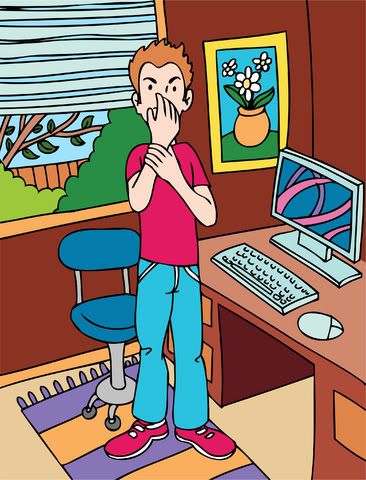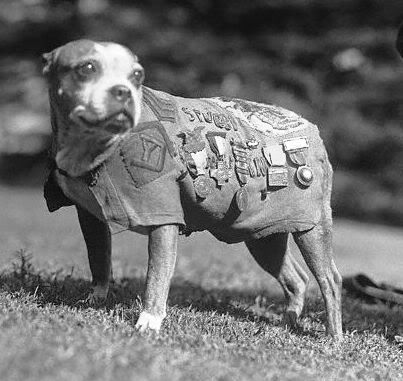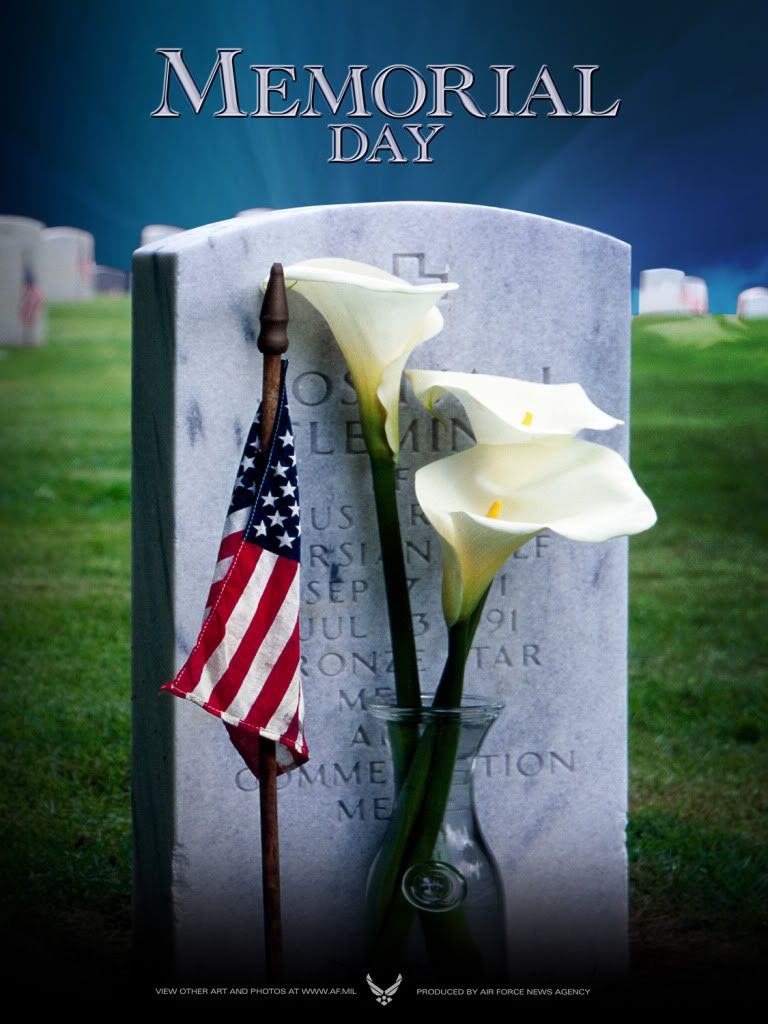|
|
Greetings!
We hope you are enjoying the warm (hot) weather this weekend and have plans for a great Memeorial Day weekend next weekend. Body Balance II will be open over the long Memorial Day weekend. Please call if you want an appointment over the holiday. This month's issue is briefer than usual, but we wanted to do something special to honor those in the military and civilian services who have died in service to their nation or community and all those who have served us with their bravery and loyalty. In additon to our regular articless on massage and aromatherapy, we have a puzzle, a story about a WWI hero and a poem to honor all those who served. Sincerely, Suzanne Eller, LMBT #7619 828-315-9900 DBA Tapestry Life Resources Susan Smith, LMBT #6579 828-320-6933 DBA Massage by Susan Laura Queen, LMBT #3224 828-638-3426 DBA Queen Company
Body Balance II
318 2nd Ave. NW Hickory, NC 28601 |
 |
Massage Can Help Repetitive Stress Injuries and Nerve Entrapment Syndromes | | |
What to do when work and play cause pain
It is one of life's paradoxes that doing a good job or enjoying sports and hobbies can cause pain, but overusing muscles, tendons and nerves by performing the same movements repeatedly can result in a condition called repetitive stress injury or its first cousin, nerve entrapment syndrome.
 | | Improper computer ergonimics can cause wrist pain. |
One of the most well-known repetitive stress injuries is carpal tunnel syndrome, often blamed on repeated movements while using a computer. It occurs when the median nerve is compressed by the wrist. Other familiar stress injuries are sciatica or piriformis syndrome, golfer's and tennis elbows, thoracic outlet syndrome, tarsal tunnel syndrome and iliotibial band syndrome. Like carpal tunnel syndrome, these occur when a nerve is compressed between muscle and bone. The overused, injured muscle constricts and presses against a nerve causing sharp pain with certain movements and a dull ache at rest.
Repetitive stress may also cause injury to the fascia, the thin connective tissue system that surrounds each bone, muscle, organ, nerve, vessel or structure in the human body. This thin membrane has been described as a huge connective sheath, and it is full of nerve endings. When it is injured, it constricts the nerve endings and the structure it surrounds. Fascial restrictions also refer pain to other locations. Plantar fasciitis is one of the most common conditions caused by fascial restrictions and is characterized by sharp, burning pain in the sole of the foot, especially on arising.
Many stress injuries that trap nerves could be avoided by better posture and attention to ergonomics or the proper form and use of the body during the activity. However, many physicians will tell you that some nerve entrapment syndromes have no clear cause. Even the most form-conscious athlete can feel the pain associated with a pinched nerve.
Many massage and bodywork techniques can relieve nerve entrapment syndromes caused by either repetitive stress injury or unknown causes. One frequently used technique is neuromuscular therapy. NMT eliminates myofascial trigger points in the muscles entrapping the affected nerve. Trigger points are taut bands of muscle tissue that stay contracted even when the muscle is at rest. They feel like small knots in the muscle and are released with slow, steady pressure. Releasing them can allow the muscle and tendons to relax thus making space between the muscles and bones so that the nerve is no longer pinched between them.
With the fascia closest to the skin's surface, a very gentle pressure such as that employed in craniosacral therapy can release adhesions that restrict nerve endings and cause pain receptors to fire. In contrast to craniosacral therapy's gentle pressure, deep tissue massage allows the therapist to release adhesions between the deepest muscles and their surrounding fascia through slow stretching, separating, friction and compression.
The therapist will determine which technique to use based on the health history of the client, the recommendation of the client's physician, the muscles and nerves involved and the degree of pain at time of treatment.
Often the massage therapist will use techniques to reeducate the muscles and to improve range of motion in the joints. Two such techniques are muscle energy technique (MET) or proprioceptive neuromuscular facilitation (PNF). The therapist will either move the client passively through a series of stretches or will ask the client actively to resist pressure involving the affected muscle. This reeducation resets the neuromuscular memory bank so that muscles do not return to their former constricted state and re-entrap the nerve.
Besides working the muscles that entrap the nerves, other nearby muscles, fascia and tendons may need therapy. Opposing muscles, in particular, may need massage to improve balance for the affected muscles and nerves. As a client, you should also expect that the massage therapist will give you homework in the form of stretches or exercise and advise you to drink water to keep the tissues hydrated.
While research shows that massage helps clients with repetitive stress injuries and nerve entrapment syndromes, you should remember that pain, whether acute or chronic, is a sign that you should see your doctor. Massage therapists cannot diagnose. Only a licensed physician can diagnose nerve entrapment syndromes, pinched nerves, and neuropathy. Please see your doctor if you think your pain is coming from repetitive stress injury or nerve entrapment. There are a number of more serious conditions that resemble these disorders that could require immediate medical attention. If you have a diagnosed repetitive stress injury or nerve entrapment syndrome, ask your doctor if you could benefit from massage and bodywork. It is a complimentary therapy that may help relieve your pain.
|
 |
| | |
Soldier saluting
Click on the tab above to mix the pieces and solve the puzzle.
|
 |
World War I Hero: Sgt. Stubby | | |
K-9 Grandfather of War Dogs
 | | Sgt. Stubby |
One unusual World War I hero fought in seventeen battles, received a gold medal from the Supreme Commander of the Armed Services John "Blackjack" Pershing, and was honored by three presidents. He even has an exhibit in the Smithsonian Natural History Museum.
His name is Sgt. Stubby, and he is a dog.
Stubby, a brindle and white pit bull-terrier mix with a stub tail, was adopted by Pvt. Robert Conroy after the pup wandered onto the military training ground of Yale University in the spring of 1917. Dogs were forbidden in military camps, but Stubby so lifted the morale of the soldiers that officials allowed him to stay.
Stubby was smart. He learned the meaning of the different bugle calls and marched with the soldiers on drill, keeping step with them. He even learned to salute by lifting his right paw to his right brow, following the lead of his fellow soldiers and saluting when they did so.
When the troops shipped out to France on the USS Minnesota, Pvt. Conroy smuggled Stubby aboard, hiding the dog in a coal bin until the ship was far at sea. Once on deck, Stubby quickly won the hearts of the sailors just as he had won over the soldiers. When the commanding officer discovered a dog on board ship, Stubby saluted, and the CO laughed then allowed Stubby to stay and participate in training drills.
When the regiment went to the frontlines of the Western Front, Stubby went with them, this time with a special order from the Colonel. Stubby quickly became the mascot of the 102nd Infantry, 26th Yankee Division, and he soon proved his heroism.
During heavy fire, Stubby ran back and forth among the trenches, locating injured soldiers and barking until help arrived or leading others away from approaching bombs and shelling to safely (he could hear the bombs approach). His first injury was when he was exposed to poison gas and had to be sent to the field hospital. After he returned to the regiment, he was highly sensitive to the tiniest, trace odor of gas. Once, during an early morning gas launch while most of the soldiers were asleep, Stubby sniffed the odor of gas and ran through the trench barking and biting the legs of the troops until everyone was awake and able to don their gas masks. He saved their lives.
Stubby was also deemed a hero when he caught a German soldier crawling in the Allied trenches making maps. Stubby barked and clamped his teeth onto the enemy spy's leg until his comrades arrived to take the spy into custody. For this act of heroism Stubby was promoted to Sergeant by the CO of the 102nd Infantry. He now outranked Conroy who had been promoted to Corporal.
Before the war was over, Stubby was injured again, this time by shrapnel from a grenade. He was sent to the Red Cross Recovery Hospital where he received treatment for chest and leg wounds. While recuperating, Stubby visited the other patients and cheered them, maintaining his role a morale-booster even when he was injured himself.
After the war, while still in France, Stubby lead the review parade of the American troops past President Woodrow Wilson. Later, he won lifetime membership in the American Legion and the American Red Cross. He marched in Legion parades and met Presidents Warren Harding and Calvin Coolidge. Stubby's person, Cpl. Conroy, attended Georgetown University where Stubby amused football fans during halftime by nudging the football around the field. Georgetown's canine mascots still keep this tradition.
Stubby was awarded many medals, chevrons, and pins for his heroism, including a gold medal from the Humane Society. He wore his medals on a blanket "uniform" made during the war by the women of Chateau Thierry, France. Today his uniform is displayed at the Smithsonian Institute in "The Price of Freedom" collection.
Sgt. Stubby died on March 16, 1926. His service to his country paved the road for military and civilian recognition of the value of canines in combat and for the creation, during World War II, of the first K-9 Corps. Sgt. Stubby is the "Grandfather of American War Dogs".
|
|
|
About Us
We work by appointment only. Please call us soon to schedule an appointment. Each of us works different days, so the best way to reach us is by our mobile numbers.
We practice numerous massage modalities, including deep tissue and neuromuscular therapy. We pride ourselves on tailoring our massages to your specific needs. We also offer discounted massage packages with no minimum per month and no contract.
We look forward to seeing you soon.
Suzanne Eller, LMBT #7619, 315-9900
Susan Smith, LMBT #5679, 320-6933
Laura Queen, LMBT #3224, 638-3426 |
|
|
|
Uses for Lavender Essential Oil
Lavender is probably the most versatile of all the essential oils and has been called a medicine chest in a bottle. Thanks to Ancient Wisdom Essential Oils for this list, compiled by Peggy Brackett.
★ Rub Lavender oil on the feet for a calming effect on the body and emotions.
★ Rub a drop of Lavender oil on your palms and smooth on your pillow to help you sleep.
★ Put a drop of Lavender oil on a bee sting or insect bite to stop itching and reduce swelling.
★ Put 2-3 drops of Lavender oil on a minor burn to decrease pain.
★ Drop Lavender oil on a cut to stop the bleeding anc clean the wound.
★ Mix several drops of Lavender oil with a carrier oil and use topically on eczema and dermatitis.
★ Place a drop of Lavender oil on the end of the tongue, around the naval or behind the ears to alleviate the symptoms of motion sickness.
★ Put a drop of Lavender oil on a tissue and wrap it around a small chip of ice to stop a nosebleed. Push the tissue covered ice chip up under the middle of the top lip to the base of the nose and hold as long as comfortable or until the bleeding stops (do not freeze the lip or gum).
★ Rub a drop of Lavender oil over the bridge of the nose to unblock tear ducts.
★ Rub Lavender oil on dry, chapped, or sunburned lips and skin, or spritz several drops of Lavender oil mixed with distilled water on a sunburn to decrease pain.
★ Massage Lavender oil on and around wounds to minimize scar tissue.
★ Rub 2 - 4 drops of Lavender oil over the armpit area to act as a deodorant.
★ Rub a drop of Lavender oil between your palms and inhale deeply or diffuse into the air to help alleviate the symptoms of allergies hay fever.
★ Rub several drops of Lavender oil into the scalp to help eliminate dandruff.
★ Place a few drops of Lavender oil on a cotton ball and place in your linen closet to scent the linens and repel moths and insects.
★ Place a drop of Lavender oil in your water fountain to scent the air, kill bacteria and prolong the time between cleanings.
★ Place a few drops of Lavender oil on a wet cloth and throw into the dryer, which will deodorize and freshen your laundry.
★ Put a drop of Lavender oil on a cold sore.
★ Apply 2-3 drops of Lavender oil to a rash to stop the itching and heal the skin.
|
 | | Photo created by Virginia Reyes, US Air Force News Agency, Public Domain |
Memorial Day
The bugle echoes shrill and sweet,
But not of war it sings to-day.
The road is rhythmic with the feet
Of men-at-arms who come to pray.
The roses blossom white and red
On tombs where weary soldiers lie;
Flags wave above the honored dead
And martial music cleaves the sky.
Above their wreath-strewn graves we kneel,
They kept the faith and fought the fight.
Through flying lead and crimson steel
They plunged for Freedom and the Right.
May we, their grateful children, learn
Their strength, who lie beneath the sod,
Who went through fire and death to earn
At last the accolade of God.
In shining rank on rank arrayed
They march, the legions of the Lord;
He is their Captain unafraid,
The Prince of Peace...Who brought a sword.
~Joyce Kilmer (Killed in action during WWI) |
|